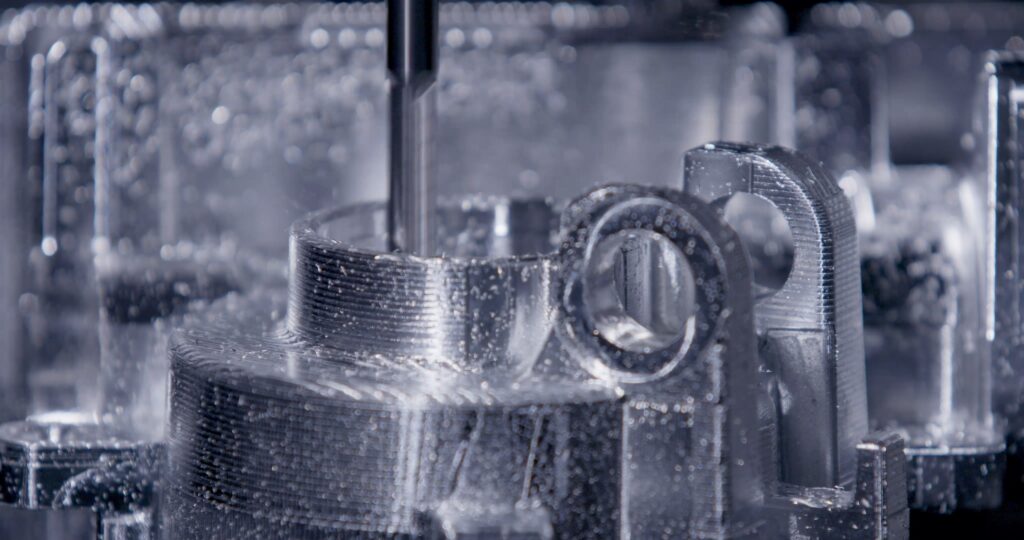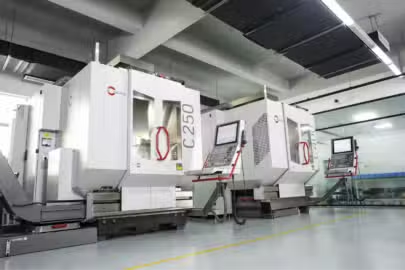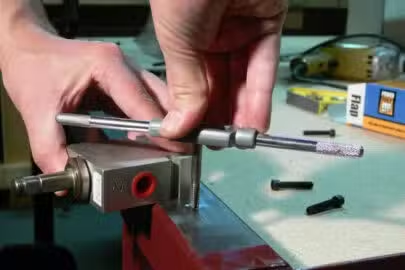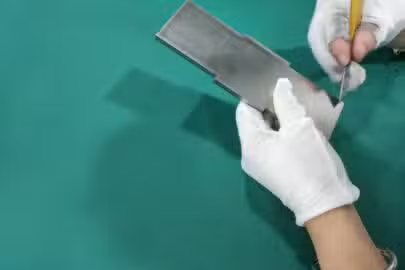Industrial revolution is being ushered in through CNC Machining services that give products with incredible accuracy and quality. The article explores how these services are turning the tables in the industry with its benefits and effect on the sector.
The demand for high levels of quality and precision requires the best automated computer-controlled process known as CMC machining services. They ensure consistency, reproducibility, and ability to achieve tight tolerances so that every product made is up to standard.
How does the use of a computer numerical control system enhance efficiency and flexibility in industry? How do CNC machines reduce wastes in production? Let us explore this at length, focusing on the importance of CNC machining towards shaping the current industry.
Pre-Production: Improving Quality Before Manufacturing Begins

Pre-production inspection is necessary during manufacture and is used as a check on the product’s quality before its production begins. The activity entails a study of the design issues of the item, production techniques involved and the purpose it serves. Furthermore, the primary aims of this examination include determination of whether CNC manufacturing methods produce desired quality, checking out the original qualities of such materials as well as identification of quality defects.
Pre-production inspection has several main advantages, some of which include:
Early Issue Identification: The pre-production inspection is one of the most useful tools for detection of problems beforehand and prevention of defects at the end stage. It refers to preemptive investigation into potential defects that may impact the quality of the end product. Thus, avoiding the occurrence of these complications prior to production is not only a matter of conserving quality but also involves cost effectiveness. It is costly for businesses for they may have to pay for expensive reworks during later tests of a product after its launch. This ensures integrity of result as well reduces the wastage on resources eventually making processes efficient hence reducing cost.
- Production Requirement Compliance: Pre-production inspection also includes confirming whether the prescribed standards during manufacture have been observed. The third stage ensures conformance of production planning, quality requirements, as well as manufacturing process. Such conformity plays an important role in avoiding any inconveniences that might arise during production. These guidelines reduce chances of errors or delays and help maintain an uninterrupted stream of processes. Through this systematic approach, production is speeded up whilst making the client believe in the reliability of our manufacturing services.
- Raw Material Quality Assurance: Quality assurance in respect to raw material forms a key aspect of pre-production inspection. This includes making sure the raw materials meet the specifications of production as stated in the contract. This assurance ensures that the final product conforms to the desired quality parameters. Everything from efficiency to lifespan hinges upon good quality material inputs and hence produces better off end products. Therefore, it is necessary to create a lasting product which addresses client needs and ultimately the objective here is more than to simply execute a service level agreement.
- Verification of Production Processes: The third main aspect of pre-production inspection is that it should also involve the confirmation of the production process. This means finding out whether these processes were set up, made, verified and recorded appropriately. The verification done in this case ensures that every process of the production phase preserves the innate quality for the products. It is a long-term assessment which penetrates through, considering the very processes that transform the ultimate outcome. Such painstaking practice ensures that each step of the manufacturing is designed and executed to produce an internally quality product.
- Clarity of Communication: Clear communication before production helps prevent any misconceptions, which could result in conflicts, between the supplier and the purchaser. Quality control is discussed on issues such as delivery dates, production schedules, and so on. Precise communication enables one to set expectations right so as not to have a misinterpretation. It ensures everyone agrees on the process and helps smooth through the transaction as well. Besides the issue of increasing trust among each other, it also makes the workflow easier and more effective.
- Cost savings: Its primary advantage is undoubtedly in terms of cost savings it saves during pre-production inspection. The early detection and immediate resolution of likely problems avoids the expensive, resource-consuming, and time-demanding rework or retesting. Preventing disturbances and smooth production flow allows one to optimize the use of resources through early intervention. Such efficiency increases overall productivity and profitability of the production process, leading to lower costs as well.
Successful completion of several activities is essential for a pre-production inspection such as finalizing the design, transfer and documentation of design, and checking the quality of raw material. These places are inspected by inspectors, who make comprehensive reports that often consist of pictures. This report provides an important guide to the buyers in order to ensure they choose a proper production which leads to getting products of the desired quality.
Production: Maintaining Quality during Manufacturing
Ensuring that the final products will have the required qualities requires quality to be maintained through every stage of manufacturing. This is an intentional effort towards better process/product quality by means of avoiding defects and minimizing waste instead of satisfying only the minimum set requirement for quality. TPM quality maintenance, or quality control, includes such aspects as improving productivity, ensuring safety of personnel, and increasing reliability of equipment.
The major aims for quality monitoring include. This includes minimizing wastages, good quality in process, reduced downtime and increasing dependability on equipment as well. Implementation of these approaches results in a reduction in production cost, enhanced productivity, improved customer satisfaction, raised employees’ job satisfaction, raised sense of security at workplace, commitment to innovation and continuous improvement.
It means that quality maintenance should aim at achieving zero faults. It involves understanding, controlling and managing the relationships among labor, materials, machinery, and approaches. They focus on not having defects in the first place and not just employing detailed inspections after the fact instead of only using thorough inspection techniques.
Manufacturing excellence cannot be accomplished without continuous improvement being one of its vital parts. By putting emphasis on continuous innovation and improvement, organizations also cut costs, increase competitiveness, and earn customer satisfaction.
Zero-defect conditions must be created and maintained in organizations’ production processes to ensure effective quality control. This entails monitoring trends and maintaining specific conditions in terms of values.
Inspections and Continuous Improvement
The inspections constitute fundamental elements that facilitate quality and efficiency without being just processes when it comes to continuous improvement principles. These elements work together to ensure high quality in all aspects of manufacturing. The engine of continuing excellence and innovations in the manufacturing process is continuous improvement, while inspection acts as the safeguard. Used together, they give an effective framework of strength as far as the end-product is concerned in being faithful to its specifications.
Inspections: Ensuring Part Conformity
Part conformance is only guaranteed by inspections that preserve production quality. Quality control by way of foreseeing likely problems arising as a result, which is a preventive way that can be adopted. They also help to detect defects, ensure that products conform to standards of quality specified and reduce the costs as a result of defective items. These are vital at various instances when making goods such as for verification of incoming raw materials and while production is being undertaken.
Therefore, for prompt system risk identification during lifespan of product, total inspection is important. Product recall can be eliminated when one adopts a proactive approach, avoids any related legal issues, not forgetting about customer satisfaction. As an example, one has to scrutinize variation in supplied raw materials against specification, as they are received from suppliers. More generally, regular inspections are used for finding defects with the aim of ensuring that customers are supplied with products which conform to expectations.
Continuous Improvement: Sustaining Quality
Continuous improvement is one of the major aspects that ensure manufacturing process quality. This systematic process involves preparation, planning, analyzing and acting. In its efforts for zero defects within quality maintenance, it studies minutely interrelations among labor, material, equipment and technology. Essentially, this approach focuses on preventing issues instead of relying solely on strict quality checks aimed at detecting mistakes in subsequent stages.
Quality maintenance and total productive maintenance are essential aspects of continuous improvement. Its three objectives are to remove problems in processes, normalize rules and policies used for monitoring standards, and provide operators with instruments required during the maintenance period. This approach helps in minimizing wastes out of inferior job, rework, and client issues, as well as developing an all out no-flaw framework. Organizations can attain manufacturing excellence, drastically lower production costs, and improve customer satisfaction by placing a high priority on continuous improvement.
Having come to the last part of this detailed discussion onCNC machining services and why they are essential nowadays, let’s take a minute to summarize what we have discussed herein. Briefly, the table above is a summary of the elements that make up quality assurance in CNC machining commencing with the initial checks prior to production to the all important continuous improvement process. The summary will also add value by providing a brief and quick reference for the fundamentals on CNC machining services.
| Aspect | Description | Benefits |
| Pre-Production Inspection | Evaluates design, manufacturing methods, and raw material quality to detect quality hazards. | Early issue identification, production requirement compliance, and raw material quality assurance |
| Production Quality Maintenance | Focuses on maintaining and improving quality during manufacturing, including TPM principles. | Reduces downtime, improves process quality, enhances equipment reliability, and ensures worker safety. |
| Inspections | Conducted at various stages, like raw material receipt and during production, to ensure part conformity. | Identifies systemic risks early, prevents product recalls, and ensures customer satisfaction. |
| Continuous Improvement | Involves a systematic approach to observation and innovation within quality maintenance. | Achieves zero-defect conditions, reduces the cost of quality, minimizes waste, and enhances customer satisfaction. |
Conclusion
Finally we have looked at the way CNC machining services change manufacturing by doing pre-production, production , and continuous quality assurance in our scrutiny of an industry. Quality is ensured through pre-production inspections that pinpoint issues as well as prove authenticity of inputs. Quality maintenance during production aims at ensuring adherence to standards and keeping defects to the minimum possible level. The company’s further commitment to quality is reinforced through inspections and continuing improvements to ensure part conformity, and keeping it maintained for a certain period of time. Finally, wish to revamp your manufacturing standards for accuracy and speed? Check out high-end CNC machine services and be part of tomorrow’s manufacturing quality standards.




